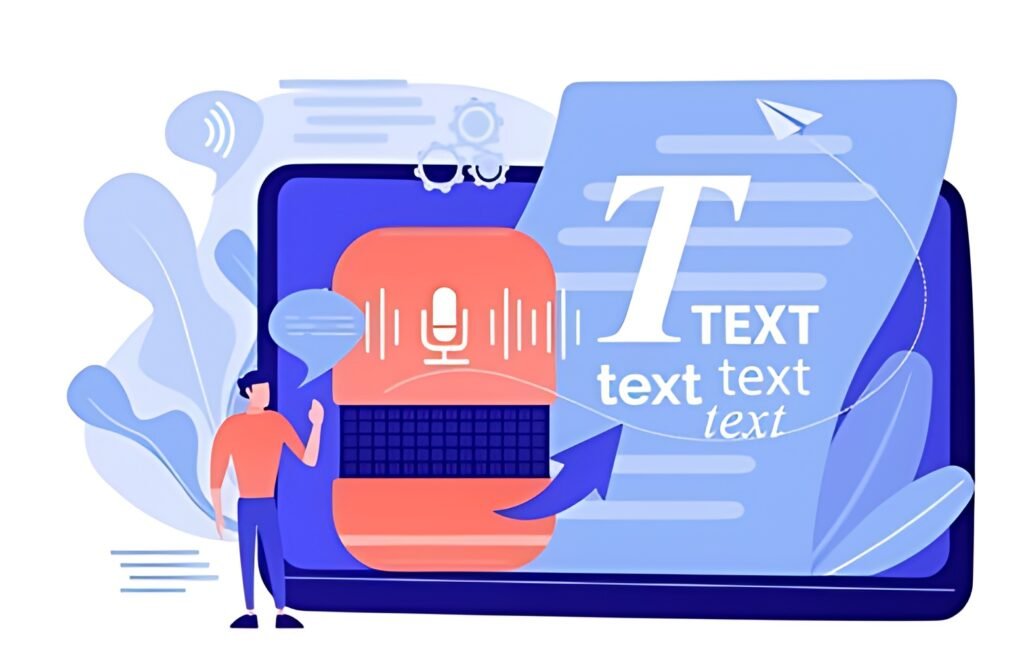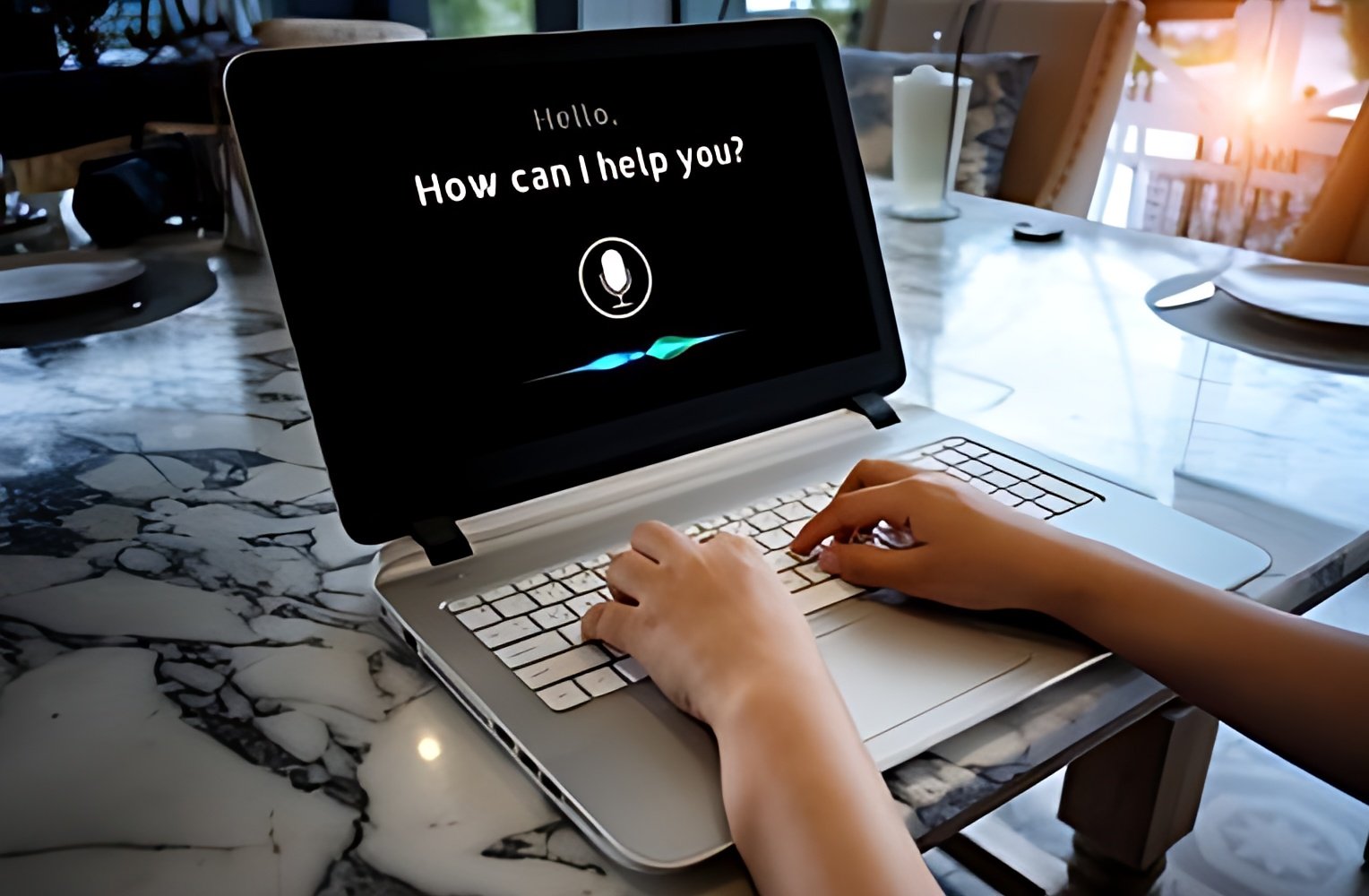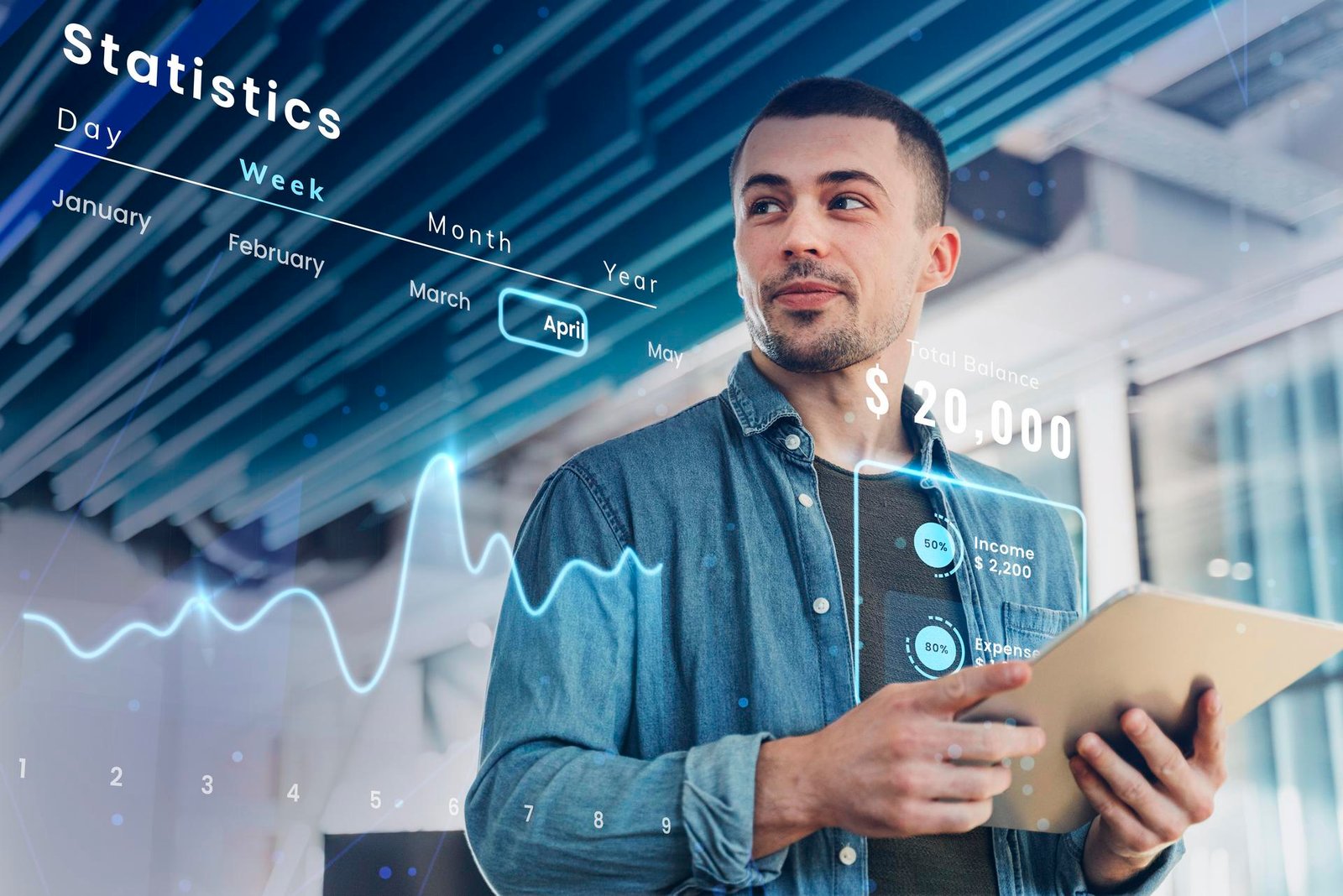Table of Contents
A Beginner’s Guide to Speech Recognition AI
Speech recognition AI is a technology which developed for decades and in recent years it has been significantly improved both in terms of precision and intricacy. In this guide, we are going to dive into the basics of speech recognition AI technology,, its functions and functionalities , difficulties faced in it development process and significant contributions done by some pioneers

What is Speech Recognition AI?
Speech recognition AI is a new technology which allows computers and applications are capable of understanding what human say as well interpreting the words. Just like in its early stages, modern improvements have made the accuracy and efficiency of speech recognition superior. This is an important aspect in different fields as its main goal entails turning spoken words into text.
Speech Recognition in AI
Embedded within the realm of artificial intelligence, speech recognition plays a significant role in mimicking human behavior by allowing machines to understand and respond to spoken language. This has led to faster and more accurate information processing, propelling the technology into everyday applications such as voice assistants like Siri and Alexa.
How Does Speech Recognition AI Work?
The process of recognizing speech via AI is highly intricate as it consists several steps such word recognition, conversion from audio to text files, deducing meaning through predictive modelling and interpretation of the commands. This technology employs artificial intelligence algorithms in voice and language analysis, which is constantly updated as a result of this process to enhance precision.
Speech Recognition AI and Natural Language Processing
Natural Language Processing (NLP) represents a critical aspect of AI that deals with the analysis and presentation natural language data in forms which can be understood by machines. As speech recognition AI technology and NLP come together, language is better recognized leading to more accurate and efficient functioning.

Use Cases of Speech Recognition AI
Call Centers
Widespread use of speech recognition in call centers is to improve their customer service. By processing data from customer interaction in real-time, businesses can respond more appropriately and correctly leading to increased overall satisfaction for their service.
Banking
Financial institutions leverage speech AI to streamline customer queries, allowing clients to inquire about their accounts or interest rates through voice interactions, thereby reducing response times.
Networking
The networking industry benefits from speech-enabled AI, allowing for efficient analysis and management of calls. Real-time interactions via voice transcription solutions enhance customer linkage and satisfaction.
Healthcare
In healthcare, speech AI aids doctors and nurses in patient care. Voice-activated devices facilitate hands-free communication, making it easier for healthcare professionals to interact with patients.
Media and Marketing
In media and marketing, speech recognition and AI-powered tools expedite content creation. Dictation software enables content writers to transcribe substantial amounts of text in a short period, though maintaining accuracy remains a consideration.
Challenges in Working with Speech Recognition AI
While speech recognition AI has made significant progress, challenges persist, including handling diverse accents and dialects, and addressing issues in noisy environments. The ongoing efforts to enhance accuracy and overcome these challenges underscore the dynamic nature of this technology.
How does speech recognition work?
Speech recognition algorithms form the backbone of speech recognition technology. These algorithms go through the process of identifying spoken words, converting audio into text, determining the meaning, and parsing out commands. These algorithms constantly refine their effectiveness through machine learning, enabling the system to adapt and improve over time.
What is the purpose of speech recognition AI?
The primary purpose of speech recognition AI is to bridge the communication gap between humans and machines. By accurately interpreting spoken language and converting it into text, this technology facilitates seamless interaction with computers and applications, leading to improved user experiences across various domains.
What is speech communication in AI?
Speech communication in AI refers to the ability of machines to understand and interpret spoken language. It involves the analysis of audio data, recognition of words, and the translation of spoken content into text. This capability is integral to applications such as voice assistants and automated customer service systems.
What type of AI uses speech recognition?
Speech recognition primarily relies on machine learning algorithms, a subset of artificial intelligence. These algorithms, often powered by neural networks, learn from large datasets to recognize patterns and improve accuracy over time. Deep learning, a sophisticated form of machine learning, has significantly contributed to the advancements in speech recognition AI.
What are the difficulties in voice recognition AI in artificial intelligence?
Voice recognition AI has several problems, for instance the precise detection and identification of various accents and dialects. In addition, noisy surroundings also affect the system’s capacity to discern and comprehend speech correctly. Ongoing research seeks to solve these problems and increase the viability of voice recognition AI systems.
What is speech recognition?
Speech recognition is the technology that enables machines to interpret and understand spoken language. It involves the analysis of audio data, identification of spoken words, and the conversion of this information into text. Speech recognition has diverse applications, ranging from virtual assistants to transcription services.
What applications is speech recognition used for?
Speech recognition finds applications across various industries and services. Call centers extensively use it for real-time customer interaction analysis, healthcare relies on it for hands-free communication, banking streamlines customer queries with it, and media and marketing efficiently create content through dictation software.
What are the different speech recognition algorithms?
Speech recognition involves various algorithms such as Hidden Markov Models, Dynamic Time Warping Division and neural networks. Furthermore, speech recognition algorithms have employed deep learning techniques such as complex Neural Networks (CNNs) and Recurrent
What are the advantages of speech recognition?
Speech recognition offers numerous advantages, including enhanced availability, improved user experience, and increased efficiency in various tasks. It enables hands-free interaction with devices, facilitates quick and accurate transcription, and contributes to the development of voice-controlled applications and systems.
What are the Drawbacks of speech recognition?
Despite its advantages, speech recognition has limitations. Challenges include difficulty in handling diverse accents and background noise, as well as occasional errors in transcription. Additionally, the need for continuous improvements in machine learning algorithms highlights ongoing efforts to overcome these drawbacks.
Speech Recognition AI: What is it and How Does it Work?
Speech recognition AI is a revolutionary technology that empowers machines to understand and interpret spoken language. Its working mechanism involves complex algorithms that analyze audio data, identify spoken words, and convert them into text. The continuous learning and adaptation of these algorithms contribute to the evolving landscape of speech recognition AI.
Speech Recognition: What Is It?
Speech recognition is the process through which machines comprehend and interpret spoken language. This involves the use of advanced algorithms that analyze audio data, recognize patterns, and convert spoken words into text. The integration of artificial intelligence has significantly enhanced the accuracy and efficiency of speech recognition.
Speed Recognition – How does it work?
Advanced algorithms and machine learning techniques enable speech recognition to work at impressive speeds. This process entails fast analysis of audio data, speedy detection and identification of said spoken words Instant transformation into text. This speed matters a lot for applications starting from real-time customer service interactions and finishing with handsfree communication in health care.
Examples of Speech Recognition AI
Numerous examples showcase the diverse applications of speech recognition AI:
Google Cloud (https://cloud.google.com)
Google Cloud leads the market in speech recognition technology, providing latter-day state of art solutions that are based on advanced machine learning algorithms. Their Speech-to-Text API is part of the Google Cloud AI platform that allows developers to easily add speech recognition functions from their applications. This API has strong support for many languages and offers precise transcription services, which is why it should be a firm of choice by any business that seeks reliable and efficient speech recognition solutions.
Amazon (https://aws.amazon.com)
Amazon, a global technology behemoth ventures into the realm of speech recognition through Amazon Web Services AWS. AWS provides several tools and services one of which is Amazon Transcribe that transcribes spoken language into written text. Amazon Transcribe utilizes machine learning to increase precision and multiple languages, which makes it a suitable solution not only for businesses that want to implement speech recognition features into their applications but also the apps can support several user regions.
iFlyTech (https://global.xfyun.cn)
iFlyTech, a leading provider of intelligent speech and language technologies, plays a pivotal role in advancing speech recognition capabilities. Their solutions cover a broad spectrum, from voice recognition to natural language processing. iFlyTech’s commitment to innovation has positioned them as a key player in the global speech technology landscape, catering to industries such as finance, healthcare, and Networking.
Sensory (https://www.sensory.com)
Sensory specializes in enhancing user experiences through advanced speech and voice recognition technologies. Their solutions extend beyond traditional speech-to-text conversion, encompassing features like wake word technology and voice biometrics. Sensory’s focus on delivering accurate and secure voice interfaces makes them a noteworthy player in industries demanding robust and reliable speech recognition solutions.
revai (https://www.rev.ai)
Rev.ai stands out as a prominent player in the speech recognition arena, offering a comprehensive suite of services for automatic speech recognition (ASR). Their platform caters to diverse needs, including transcription services, real-time speech-to-text, and adjustable language models. With a user-friendly interface and powerful API, rev.ai is a go-to choice for businesses seeking efficient and scalable speech recognition solutions.
Conclusion
As this paper comes to an end, it is evident that Speech Recognition AI has become a revolutionary technology in terms of accuracy and efficiency. Its uses span from call center customer service to hands-free communication in healthcare, underscoring its widespread influence. There are still challenges, but constant efforts by industry leaders such as Google cloud Amazon iFlyTech Sensory and revai demonstrate the dynamic nature of this technology. In the future, as we continue to evolve in Speech Recognition AI and explore new applications of Chat GPT for use in various industries such as food and jobs , there will always be more progress regarding how we interact with technology.



















hi!,I really like your writing very much! proportion we keep in touch extra about your post on AOL? I require a specialist on this space to unravel my problem. May be that is you! Having a look ahead to see you.
What Is Kerassentials? Kerassentials is a doctor-formulated oil for healthy skin and nails.
Appreciating the commitment you put into your blog and in depth information you offer. It’s good to come across a blog every once in a while that isn’t the same out of date rehashed information. Wonderful read! I’ve saved your site and I’m adding your RSS feeds to my Google account.
Very interesting information!Perfect just what I was searching for! “I have a hundred times wished that one could resign life as an officer resigns a commission.” by Robert Burns.
Your article helped me a lot, is there any more related content? Thanks!
canadian drugs pharmacy: ordering drugs from canada – canadian pharmacy no rx needed
indian pharmacy online: best india pharmacy – indian pharmacy online
canada pharmacy online legit best canadian online pharmacy canadian drugs
mexican pharmaceuticals online: mexican rx online – mexican drugstore online
https://canadapharmast.com/# pet meds without vet prescription canada
top 10 pharmacies in india: buy prescription drugs from india – п»їlegitimate online pharmacies india
reputable indian pharmacies: п»їlegitimate online pharmacies india – indianpharmacy com
mexican mail order pharmacies mexican pharmaceuticals online п»їbest mexican online pharmacies
recommended canadian pharmacies: canadian drug pharmacy – canadian pharmacy prices
buy medicines online in india: best online pharmacy india – india pharmacy mail order
indian pharmacy online: indian pharmacies safe – online pharmacy india
mexican pharmaceuticals online purple pharmacy mexico price list buying prescription drugs in mexico
india pharmacy: india pharmacy – best online pharmacy india
п»їbest mexican online pharmacies: mexican drugstore online – mexican rx online
medication from mexico pharmacy: п»їbest mexican online pharmacies – pharmacies in mexico that ship to usa
http://doxycyclinedelivery.pro/# doxycycline mono
https://clomiddelivery.pro/# where can i get clomid now
Well I definitely enjoyed studying it. This post provided by you is very practical for correct planning.
I do not even know how I ended up right here, however I believed this publish was once good. I do not understand who you might be however definitely you are going to a well-known blogger if you aren’t already 😉 Cheers!
http://amoxildelivery.pro/# amoxicillin 775 mg
https://ciprodelivery.pro/# cipro
https://clomiddelivery.pro/# how can i get cheap clomid without insurance
We’re a group of volunteers and opening a brand new scheme in our community. Your site offered us with valuable information to paintings on. You’ve done a formidable process and our whole group will likely be thankful to you.
https://amoxildelivery.pro/# amoxicillin 500mg over the counter
https://ciprodelivery.pro/# ciprofloxacin generic
I think other site proprietors should take this web site as an model, very clean and fantastic user genial style and design, let alone the content. You are an expert in this topic!
http://doxycyclinedelivery.pro/# cheap doxycycline 100mg capsule
http://paxloviddelivery.pro/# п»їpaxlovid
Very interesting details you have noted, regards for posting. “Strength does not come from physical capacity. It comes from an indomitable will.” by Mohandas Karamchand Gandhi.
There are some fascinating closing dates in this article however I don’t know if I see all of them heart to heart. There is some validity however I’ll take hold opinion till I look into it further. Good article , thanks and we would like more! Added to FeedBurner as nicely
mexico drug stores pharmacies buying prescription drugs in mexico mexican pharmacy
mexico drug stores pharmacies: mexican online pharmacies prescription drugs – medicine in mexico pharmacies
http://mexicandeliverypharma.com/# п»їbest mexican online pharmacies
mexican online pharmacies prescription drugs mexican rx online mexican mail order pharmacies
mexico drug stores pharmacies: buying prescription drugs in mexico online – best online pharmacies in mexico
mexican mail order pharmacies: reputable mexican pharmacies online – mexican online pharmacies prescription drugs
http://mexicandeliverypharma.com/# п»їbest mexican online pharmacies
best online pharmacies in mexico: best online pharmacies in mexico – buying from online mexican pharmacy
purple pharmacy mexico price list buying prescription drugs in mexico online mexico pharmacy
mexico drug stores pharmacies: best online pharmacies in mexico – mexican pharmaceuticals online
buying prescription drugs in mexico online: buying from online mexican pharmacy – mexican drugstore online
https://mexicandeliverypharma.online/# best online pharmacies in mexico
mexico drug stores pharmacies: pharmacies in mexico that ship to usa – buying prescription drugs in mexico online
mexican drugstore online mexican drugstore online mexico drug stores pharmacies
buying prescription drugs in mexico: mexican online pharmacies prescription drugs – mexican online pharmacies prescription drugs
buying prescription drugs in mexico: medication from mexico pharmacy – п»їbest mexican online pharmacies
mexican border pharmacies shipping to usa: buying prescription drugs in mexico – mexico pharmacies prescription drugs
reputable mexican pharmacies online: pharmacies in mexico that ship to usa – mexican online pharmacies prescription drugs
mexico pharmacies prescription drugs: mexican rx online – buying prescription drugs in mexico
pharmacies in mexico that ship to usa: buying from online mexican pharmacy – medicine in mexico pharmacies
mexican rx online mexico pharmacy mexico pharmacy
mexico drug stores pharmacies: pharmacies in mexico that ship to usa – mexican mail order pharmacies
buying prescription drugs in mexico: mexican drugstore online – pharmacies in mexico that ship to usa
I enjoy gathering utile information , this post has got me even more info! .
buying prescription drugs in mexico online: mexican drugstore online – buying prescription drugs in mexico
п»їbest mexican online pharmacies pharmacies in mexico that ship to usa medication from mexico pharmacy
mexican border pharmacies shipping to usa: purple pharmacy mexico price list – medication from mexico pharmacy
mexican rx online: mexican drugstore online – mexico pharmacies prescription drugs
reputable mexican pharmacies online mexican pharmacy mexican online pharmacies prescription drugs
best online pharmacies in mexico: mexico pharmacies prescription drugs – medicine in mexico pharmacies
mexican drugstore online: mexico drug stores pharmacies – reputable mexican pharmacies online
mexico drug stores pharmacies: mexico pharmacies prescription drugs – pharmacies in mexico that ship to usa
purple pharmacy mexico price list: best online pharmacies in mexico – reputable mexican pharmacies online
mexico drug stores pharmacies mexico pharmacies prescription drugs pharmacies in mexico that ship to usa
buying prescription drugs in mexico online: mexican mail order pharmacies – mexican mail order pharmacies
pharmacies in mexico that ship to usa: п»їbest mexican online pharmacies – mexican online pharmacies prescription drugs
buying from online mexican pharmacy best online pharmacies in mexico pharmacies in mexico that ship to usa
mexico drug stores pharmacies: pharmacies in mexico that ship to usa – mexican online pharmacies prescription drugs
mexican mail order pharmacies: mexico drug stores pharmacies – reputable mexican pharmacies online
buying prescription drugs in mexico online buying prescription drugs in mexico online mexican rx online
п»їbest mexican online pharmacies: mexican mail order pharmacies – mexican rx online
medicine in mexico pharmacies: mexico drug stores pharmacies – purple pharmacy mexico price list
mexico pharmacy best online pharmacies in mexico mexican online pharmacies prescription drugs
reputable mexican pharmacies online: mexican drugstore online – mexican mail order pharmacies
mexico drug stores pharmacies: mexican drugstore online – mexican pharmaceuticals online
pharmacies in mexico that ship to usa: medication from mexico pharmacy – mexico pharmacies prescription drugs
mexican border pharmacies shipping to usa buying prescription drugs in mexico online purple pharmacy mexico price list
F*ckin’ tremendous issues here. I am very satisfied to look your article. Thank you a lot and i’m having a look ahead to contact you. Will you kindly drop me a mail?
medicine in mexico pharmacies: buying from online mexican pharmacy – mexico pharmacies prescription drugs
buying prescription drugs in mexico online: medication from mexico pharmacy – п»їbest mexican online pharmacies
mexico pharmacies prescription drugs: mexico drug stores pharmacies – buying prescription drugs in mexico online
mexican drugstore online: mexican border pharmacies shipping to usa – reputable mexican pharmacies online
I am really enjoying the theme/design of your weblog. Do you ever run into any browser compatibility problems? A couple of my blog audience have complained about my website not operating correctly in Explorer but looks great in Opera. Do you have any suggestions to help fix this problem?
medicine in mexico pharmacies: medicine in mexico pharmacies – medication from mexico pharmacy
purple pharmacy mexico price list: buying prescription drugs in mexico – buying prescription drugs in mexico
pharmacies in mexico that ship to usa: mexican online pharmacies prescription drugs – mexico pharmacies prescription drugs
purple pharmacy mexico price list: mexico drug stores pharmacies – mexican drugstore online
buying prescription drugs in mexico online: buying from online mexican pharmacy – п»їbest mexican online pharmacies
cost cheap propecia without insurance: cheap propecia without prescription – order propecia tablets
http://cytotecbestprice.pro/# cytotec abortion pill
http://nolvadexbestprice.pro/# nolvadex estrogen blocker
cost of propecia prices: generic propecia without insurance – cheap propecia
https://propeciabestprice.pro/# buy cheap propecia pill
http://propeciabestprice.pro/# cost generic propecia price
tamoxifen vs raloxifene: tamoxifen for breast cancer prevention – tamoxifen
https://propeciabestprice.pro/# generic propecia without rx
zithromax z-pak: zithromax 1000 mg pills – where can you buy zithromax
can i buy zithromax online: zithromax 500mg – zithromax 500mg price
prednisone 40 mg tablet: prednisone tablets canada – online prednisone
https://propeciabestprice.pro/# get propecia without insurance
buying generic propecia without dr prescription: get cheap propecia tablets – cost cheap propecia without dr prescription
Hello my friend! I wish to say that this article is awesome, nice written and include almost all significant infos. I?¦d like to peer more posts like this .
п»їcytotec pills online: buy cytotec over the counter – buy cytotec pills online cheap
Thanks for sharing. I read many of your blog posts, cool, your blog is very good.
https://zithromaxbestprice.pro/# zithromax z-pak
buy cytotec pills online cheap: order cytotec online – Abortion pills online
so much great information on here, : D.
top farmacia online: sildenafil oral jelly 100mg kamagra – farmaci senza ricetta elenco
I saw a lot of website but I think this one has something special in it in it
Farmacie online sicure: Avanafil 50 mg – Farmacie online sicure
esiste il viagra generico in farmacia: viagra senza ricetta – viagra online spedizione gratuita
acquisto farmaci con ricetta: Avanafil a cosa serve – farmacie online autorizzate elenco
Farmacie on line spedizione gratuita: farmacia online migliore – Farmacia online miglior prezzo
I simply wished to appreciate you again. I do not know the things I could possibly have done without the actual ideas provided by you on my situation. It previously was a very traumatic dilemma in my position, nevertheless discovering this well-written technique you dealt with the issue forced me to weep with delight. I will be happier for this information as well as hope you really know what a great job you happen to be accomplishing educating other individuals through your websites. I am certain you haven’t come across any of us.
http://tadalafil.auction/# cialis 20 mg sale
canada cialis online: cheapest tadalafil – cialis from canadian pharmacy registerd
cialis side effects women: Generic Cialis without a doctor prescription – cialis soft tabs, united states origin
http://tadalafil.auction/# cialis going over the counter
I saw a lot of website but I think this one holds something extra in it in it
does tricare cover cialis for daily use: Generic Cialis without a doctor prescription – cialis priligy online australia
cialis 5mg price: Generic Tadalafil 20mg price – google south africa cialis
http://tadalafil.auction/# how does cialis work in the body
top 10 pharmacies in india: Best Indian pharmacy – mail order pharmacy india
https://mexicopharmacy.win/# mexican online pharmacies prescription drugs
online ed drugs
http://indiapharmacy.shop/# top 10 online pharmacy in india
affordable ed medication
india pharmacy: Online pharmacy USA – indian pharmacy
https://mexicopharmacy.win/# mexico drug stores pharmacies
top rated ed pills
https://edpillpharmacy.store/# ed doctor online
generic ed meds online: Cheapest online ED treatment – buying erectile dysfunction pills online
Hiya, I am really glad I have found this info. Nowadays bloggers publish only about gossips and net and this is actually frustrating. A good website with exciting content, that is what I need. Thanks for keeping this web-site, I will be visiting it. Do you do newsletters? Cant find it.
https://indiapharmacy.shop/# indian pharmacies safe
https://edpillpharmacy.store/# buy erectile dysfunction medication
http://mexicopharmacy.win/# п»їbest mexican online pharmacies
https://edpillpharmacy.store/# ed meds online
http://indiapharmacy.shop/# Online medicine home delivery
https://indiapharmacy.shop/# reputable indian pharmacies
http://mexicopharmacy.win/# medication from mexico pharmacy
Just what I was looking for, appreciate it for posting.
http://furosemide.win/# buy furosemide online
cytotec online http://furosemide.win/# furosemide 100mg
furosemide 40 mg
lipitor otc lipitor 40 mg price india lipitor prices compare
Misoprostol 200 mg buy online https://furosemide.win/# lasix medication
lasix furosemide 40 mg
This blog is definitely rather handy since I’m at the moment creating an internet floral website – although I am only starting out therefore it’s really fairly small, nothing like this site. Can link to a few of the posts here as they are quite. Thanks much. Zoey Olsen
buy cytotec pills buy cytotec online buy cytotec in usa
http://tamoxifen.bid/# nolvadex 10mg
buy cytotec pills http://furosemide.win/# furosemide 100mg
lasix tablet
https://cytotec.pro/# buy misoprostol over the counter
lisinopril online usa lisinopril prices buy lisinopril 20 mg online
cytotec online https://cytotec.pro/# buy cytotec online fast delivery
furosemide 100 mg
http://lisinopril.guru/# lisinopril 10mg tablets price
п»їcytotec pills online http://furosemide.win/# lasix dosage
lasix generic
I am continually looking online for tips that can benefit me. Thanks!
lasix furosemide: buy furosemide – furosemide 100mg
https://furosemide.win/# lasix furosemide
lisinopril 20 mg tablet price: Lisinopril online prescription – lisinopril tablets
cytotec online https://lipitor.guru/# lipitor 10mg tablets
lasix tablet
buy misoprostol over the counter: Misoprostol price in pharmacy – buy misoprostol over the counter
http://tamoxifen.bid/# tamoxifen citrate pct
nolvadex gynecomastia: buy tamoxifen online – how to get nolvadex
Abortion pills online https://lipitor.guru/# lipitor.com
lasix generic
lasix furosemide 40 mg: generic lasix – lasix 40 mg
My brother suggested I might like this web site. He was entirely right. This post truly made my day. You can not imagine simply how much time I had spent for this information! Thanks!
You are my breathing in, I have few blogs and often run out from to brand.
Hello! I could have sworn I’ve been to this blog before but after browsing through some of the post I realized it’s new to me. Anyways, I’m definitely happy I found it and I’ll be book-marking and checking back frequently!
Write more, thats all I have to say. Literally, it seems as though you relied on the video to make your point. You obviously know what youre talking about, why waste your intelligence on just posting videos to your site when you could be giving us something enlightening to read?
https://easyrxindia.shop/# reputable indian pharmacies
http://mexstarpharma.com/# mexican mail order pharmacies
https://mexstarpharma.com/# mexican drugstore online
https://mexstarpharma.online/# mexico drug stores pharmacies
http://easyrxcanada.com/# canada pharmacy reviews
https://easyrxindia.com/# reputable indian online pharmacy
Thanks for another great article. Where else could anyone get that type of information in such an ideal way of writing? I have a presentation next week, and I am on the look for such info.
https://easyrxindia.shop/# pharmacy website india
https://mexstarpharma.com/# pharmacies in mexico that ship to usa
deneme bonusu veren siteler: bonus veren siteler – deneme bonusu veren siteler
I think you have noted some very interesting details, thanks for the post.
sweet bonanza hilesi: slot oyunlari – sweet bonanza slot
slot siteleri bonus veren: slot siteleri – yeni slot siteleri
casino slot siteleri: canl? slot siteleri – en iyi slot siteler
en guvenilir slot siteleri: en iyi slot siteleri 2024 – slot casino siteleri
I definitely wanted to type a quick note to express gratitude to you for the magnificent solutions you are showing at this site. My time consuming internet investigation has at the end of the day been compensated with awesome content to share with my visitors. I would state that that most of us site visitors actually are very much endowed to exist in a good website with very many outstanding people with very beneficial tips. I feel quite blessed to have encountered the weblog and look forward to so many more excellent moments reading here. Thanks a lot once more for everything.
http://1xbet.contact/# 1xbet зеркало рабочее на сегодня
pin up казино: pin up casino – пин ап казино
1xbet зеркало: 1xbet зеркало – 1xbet зеркало рабочее на сегодня
https://pin-up.diy/# пин ап зеркало
1xbet скачать: 1xbet скачать – 1xbet зеркало
https://pin-up.diy/# pin up казино
пин ап казино: пин ап казино – pin up
Perfectly written subject material, Really enjoyed studying.
пин ап вход: пин ап казино вход – pin up casino
http://1win.directory/# 1вин официальный сайт
Thank you for another informative site. Where else could I get that type of information written in such a perfect way? I have a project that I am just now working on, and I have been on the look out for such information.
1хбет зеркало: зеркало 1хбет – 1xbet
http://vavada.auction/# vavada казино
1xbet: 1хбет официальный сайт – 1хбет
mexitil online pharmacy: flomax pharmacy training – priligy johor pharmacy
target pharmacy amoxicillin: can you buy viagra pharmacy – domperidone australia pharmacy
https://pharm24on.com/# asacol pharmacy card
guardian pharmacy propecia
imiquimod cream pharmacy: winn-dixie pharmacy – online pharmacy ordering
buy amoxicillin no prescription fda checked pharmacy: pharmacy rx one legit – naltrexone india pharmacy
https://easydrugrx.com/# propecia in pharmacy
nizoral shampoo uk pharmacy
pharmacy cost of cialis: legit mexican pharmacy – viagra sale 70 pharmacy online
online pharmacy 365 pills: australian pharmacy online – singapore online pharmacy
levaquin online pharmacy: kamagra pharmacy uk – avandia specialty pharmacy
levitra us pharmacy: pain meds online pharmacy – silkroad online pharmacy reviews
cymbalta pharmacy prices: kaiser pharmacy – Micardis
https://mexicopharmacy.cheap/# medicine in mexico pharmacies
buy prescription drugs from india: buy medicines online in india – indian pharmacies safe
medicine in mexico pharmacies buying prescription drugs in mexico online purple pharmacy mexico price list
indian pharmacies safe: cheapest online pharmacy india – india pharmacy mail order
birth control pills online pharmacy: best online pharmacy india – certified online pharmacy cialis
purple pharmacy mexico price list: mexican border pharmacies shipping to usa – reputable mexican pharmacies online
http://mexicopharmacy.cheap/# medicine in mexico pharmacies
dutasteride india pharmacy online pharmacy venlafaxine meijer pharmacy cipro
much does viagra cost pharmacy: Viagra Plus – legal online pharmacy review
best online pharmacy uk viagra: top online pharmacy – pharmacies online
top online pharmacy india Online medicine order buy medicines online in india
http://mexicopharmacy.cheap/# mexican drugstore online
purple pharmacy mexico price list: buying prescription drugs in mexico online – buying prescription drugs in mexico
viagra asda pharmacy: pharmacy store fixtures and design – viagra pharmacy cost
pharmacies in mexico that ship to usa mexican mail order pharmacies mexico drug stores pharmacies
mexican border pharmacies shipping to usa: mexican border pharmacies shipping to usa – buying from online mexican pharmacy
https://indianpharmacy.company/# best india pharmacy
buy hcg online pharmacy buy viagra pharmacy uk united states online pharmacy
mexican pharmaceuticals online: best online pharmacies in mexico – mexican mail order pharmacies
late night pharmacy artane: online pharmacy reviews propecia – online pharmacy in india
http://mexicopharmacy.cheap/# п»їbest mexican online pharmacies
best online pharmacies in mexico: mexican online pharmacies prescription drugs – mexican pharmaceuticals online
mexican pharmaceuticals online mexico drug stores pharmacies purple pharmacy mexico price list
medicine in mexico pharmacies: buying from online mexican pharmacy – buying prescription drugs in mexico
celebrex pharmacy prices: vytorin online pharmacy – family rx pharmacy
northwestpharmacy online pharmacy pain medicine drug costs
http://pharmbig24.com/# pharmacy online india
generic wellbutrin pharmacy: modafinil online pharmacy – rx discount pharmacy middlesboro ky
direct rx pharmacy: birth control – target pharmacy flovent
buying prescription drugs in mexico online п»їbest mexican online pharmacies mexico drug stores pharmacies
I have recently started a web site, the info you provide on this web site has helped me tremendously. Thanks for all of your time & work. “Patriotism is often an arbitrary veneration of real estate above principles.” by George Jean Nathan.
http://mexicopharmacy.cheap/# pharmacies in mexico that ship to usa
п»їlegitimate online pharmacies india: reputable indian online pharmacy – indian pharmacy
п»їbest mexican online pharmacies buying prescription drugs in mexico online pharmacies in mexico that ship to usa
mexico drug stores pharmacies: mexico drug stores pharmacies – purple pharmacy mexico price list
pompharmacy viagra: best online pharmacy levitra – orlistat generics pharmacy
mexican drugstore online buying from online mexican pharmacy mexican mail order pharmacies
https://indianpharmacy.company/# indian pharmacy online
online pharmacy viagra us: rx pharmacy coupons reviews – tadalafil 20 mg online pharmacy
buy prescription drugs from india: buy medicines online in india – indian pharmacy
overseas pharmacy adipex do pharmacy sell viagra Tizanidine
http://mexicopharmacy.cheap/# pharmacies in mexico that ship to usa
reputable mexican pharmacies online: mexico pharmacies prescription drugs – mexican pharmaceuticals online
buy prescription drugs from india: india pharmacy mail order – indian pharmacy paypal
indian pharmacies safe online shopping pharmacy india п»їlegitimate online pharmacies india
cheapest online pharmacy india: indian pharmacy online – top 10 online pharmacy in india
gates of olympus demo turkce [url=https://gatesofolympusoyna.online/#]Gates of Olympus[/url] Gates of Olympus
https://betine.online/# betine giris
casibom [url=http://casibom.auction/#]casibom guncel[/url] casibom guncel giris
gates of olympus demo: gates of olympus giris – gates of olympus demo turkce
betine guncel [url=https://betine.online/#]betine promosyon kodu 2024[/url] betine guncel